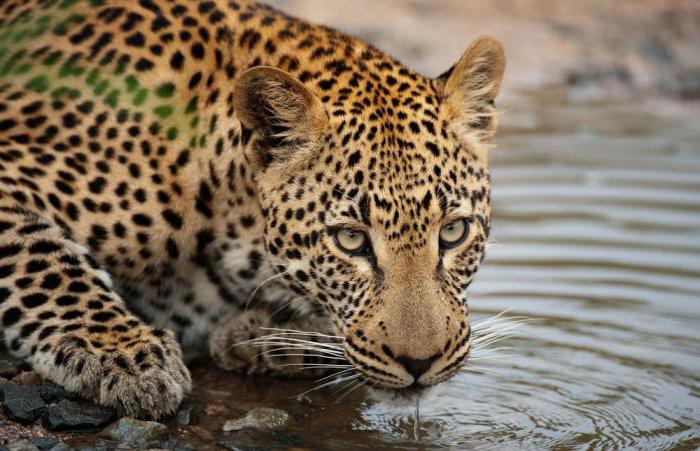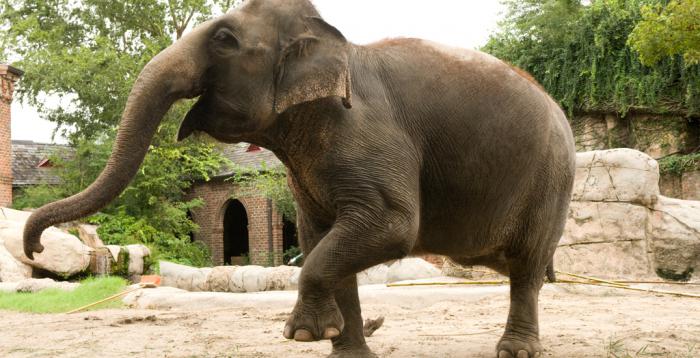African serval. Home serval
If you have always dreamed of having a real homewild beast in miniature, then the African serval will be an excellent choice. And to become the owner of such an animal is very prestigious, because these seals are on a par with purebred horses. However, as regards content, serval does not require any special conditions: this beast is very unpretentious and has a noble character, which makes it an excellent pet. We suggest today to get acquainted with this amazing animal.

African cat serval: description
This animal externally is along-legged slender strong cat of medium size. The nearest relatives of the serval are the lynx and caracal. Characteristic features of the appearance of this cat are very long strong paws and disproportionately large ears with rounded tips. The African serval has a small head with an elongated muzzle and a broad nose and a short tail that does not reach the ground. The eyes of the breed are fairly large, and the pupils in adult animals are round. The claws of the serval are crescent shaped and, like the domestic cats, are drawn into the pads of the feet.
As for the dimensions, the African servalis larger than the usual "Murki" and "Vaska". So, the height at the withers of these wild seals is from 40 to 65 centimeters. The body length reaches 90-130 centimeters, and the tail - 30-45 centimeters. Serval weight can vary between 8-18 kilograms.
These African seals are characterized by color inform of dark spots and bands on a yellow-gray background. In this case, the breast, muzzle and stomach are white. Moreover, the color of these animals varies depending on the habitat. So, in the mountainous areas one can meet completely black representatives of the breed, and in conditions of captivity, white servals with silver-gray spots were born several times.
When communicating these animals use different types of vocalizations, among which growl, purr, shrill scream and others.

Area and habitat
The cat was Serb from Africa. On this continent, it is found almost everywhere except for the Sahara desert, southern regions and the equatorial forest zone. In nature, these animals prefer to settle in open spaces with thickets of grass and shrubs not far from sources of fresh water. But the desert, the rainforest and the dry plains, the African serval tries to avoid.
Lifestyle
For the most part, these representatives of the familyfelines are active in twilight. So, they go out hunting late in the evening and early in the morning. However, sometimes you can find a serval hunting down prey in the daytime. Thanks to their long paws, these wild seals move easily and noiselessly through the tall grass. An excellent rumor helps them to easily track even small prey. In addition, the serval can jump to a height of up to three meters, which allows it to shoot down birds that fly from the ground. These animals prefer not to chase after the victim, but to sneak up to her in the tall grass, and then, after making one big leap, grab it with claws and hold it under him. Also, the serval easily digs out of the burrows of a variety of rodents. These seals perfectly climb trees and swim. In general, you can safely call servali an excellent hunter. So, according to statistics, two-thirds of his attacks end in catching prey.
As for the natural enemies of Serval, theyare wild dogs, leopards and hyenas. In addition, these magnificent animals often become victims of man. At moments of danger, the African serval prefers either to hide or to flee.

Social structure
African servals lead a solitary lifestyle,merging into pairs only during the breeding season. Males of these animals are very territorial. So, the area of their individual sites can be from 40 to 70 square meters. kilometers. In this case, females fix a much smaller area - 2-9 square meters. kilometers.
Reproduction of the African serval
During the mating season, the female and maleare combined into a pair. They hunt together and rest together. It is interesting that males of this species can mate with both caracals and ordinary domestic cats, resulting in the appearance of hybrids. In anticipation of childbirth, the female servala settles in an old burrow hole or builds a nest in dense high grass. Pregnancy in the representatives of this species lasts from 65 to 75 days. In one litter, two or three cubs appear. When small males begin to hunt independently, the mother expels them from their territory. Samochki remain with the parent much longer. Sexual maturation in servalov occurs at the age of one and a half to two years.

Serval at home
These amazing seals today are increasingly possiblemeet as pets. There is a myth about the danger of serval for a person, but this opinion is not based on any real facts. Because in nature the victims of these representatives of the cat family are small animals and birds. Man, rather, acts as a natural enemy, rather than potential prey. In this regard, the cat will not under any circumstances attack his master and his family members. Therefore, such an exotic beast can be kept even in a house where there are children. A representative of this breed is quite possible to get, even if you already have a cat, a domestic serval, most likely, quickly find a common language with it, especially if you took him for education at an early age (it is recommended to take 1.5-2 month old kittens) . It is interesting that these people from Africa with their habits often more like dogs, so you can walk with them on a leash. In addition, the serval will be happy to bring you a ball or other abandoned toy. Also they are very gentle beings who love affection and attention, as, indeed, all domestic cats.

With regard to feeding, then in the wildNature Serval feeds mainly on rodents and small birds. At the maintenance of the house their diet should consist of raw meat with bones - beef and chicken. On the day, these seals can eat from 400 grams to 1.5 kilograms of food. In addition, servalam should be given vitamins with calcium supplements.
These people from Africa are very stronghealth. However, in urban conditions, they need to be vaccinated, like all other animals. As for life expectancy, on average, it ranges from 15 to 20 years.








